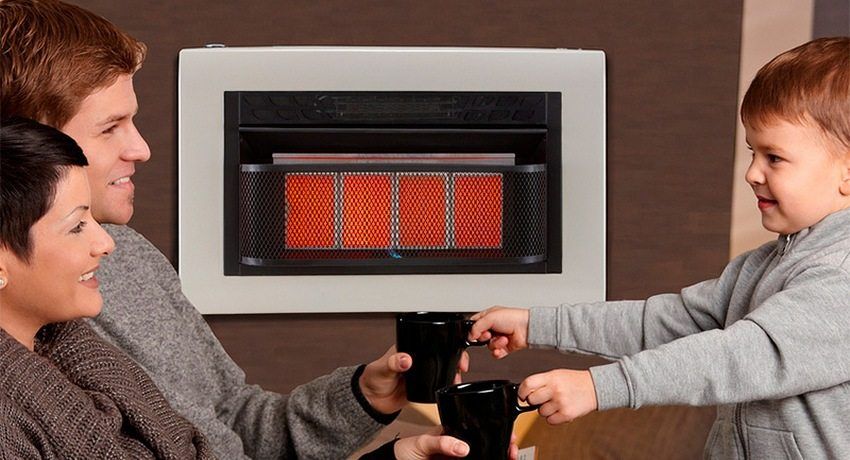This article discusses paper, non-woven and glass cloth wallpaper for painting: the pros and cons of each type of finishing materials, their characteristics and characteristics, as well as pricing for products from popular brands. In the text you can find tips on choosing a dye to create a finishing layer on wallpaper, as well as average prices for services performed by professional painters.
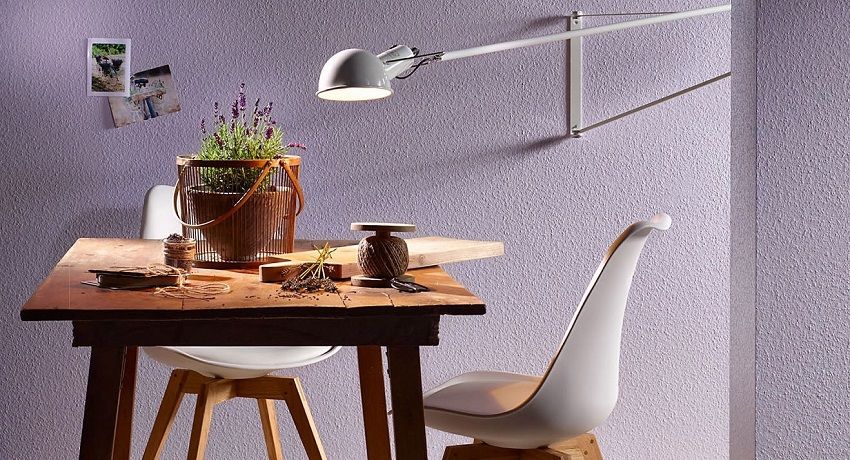
Wallpaper for painting: the pros and cons of using paintings instead of the standard painting
Wallpapering on walls and ceilings is considered by many apartment owners as the easiest and most profitable way to transform the appearance of a home. At the same time, it is no longer enough for the modern consumer to just hide the walls, and after the repair he wants to get an original and bright interior, and in some cases even an exotic one. For this reason, many prefer to buy textured wallpaper for painting or create an unusual effect with the help of dye.

With regard to technology, the use of wallpaper and dye composition has both its advantages and disadvantages, which affect not only the application process, but also individual stages of work, for example, preparation of the base.
For pasting wallpaper there is no need for thorough preparation of the surface. The material, which has even the smallest relief structure, will successfully hide all the irregularities and shortcomings of walls and ceilings. But the process of removing old wallpaper requires considerable effort, however, this can be avoided if you buy German wallpaper for painting or Italian based on fiberglass or non-woven. In addition, high-quality material can be repainted up to 10-15 times during the operational period.
Note! If inexpensive paper wallpapers with a small relief are used as finishing, after the third color change their structure will no longer be visible under a layer of paint. As a rule, such materials can withstand up to 5 application of the composition.
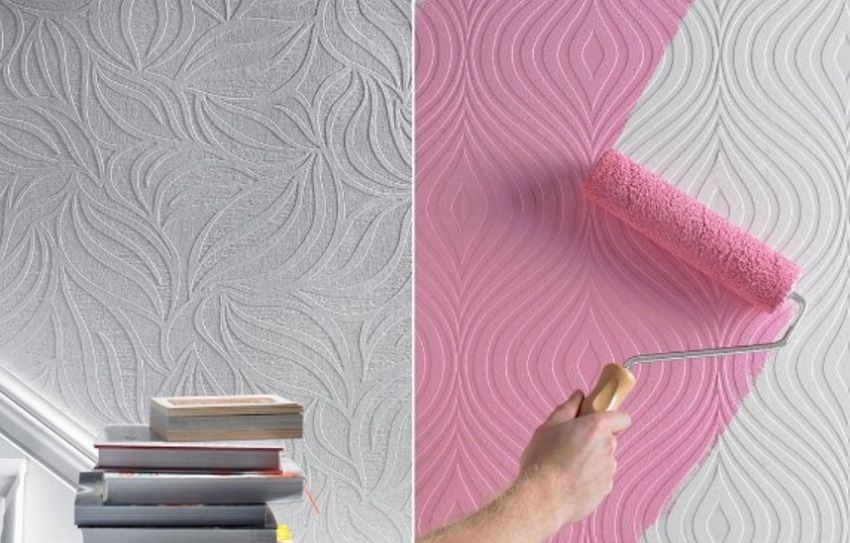
With regard to the use of paint as a finishing material, in this case, the preparation of the base must be very thorough, which is a significant disadvantage. The surface must be perfectly flat. Otherwise, cracks will quickly appear on the coating and delamination will occur. If you need to change the colors of the previously painted walls, do not have to remove the old coating, because the dye can be applied over the existing finish. Although this advantage have the wallpaper itself.
If earlier it was believed that the dye is a more environmentally friendly option for finishing for residential premises than wallpaper, then today cloth manufacturers understand the importance of preserving the environment, therefore they offer materials created on a natural basis.
Consumers even have the opportunity to buy children’s wallpaper for vegetable-based painting:
- cane;
- raffia;
- bamboo;
- algae, etc.
Such coatings are 100% environmentally friendly, because the fabric is made from interwoven plant fibers.
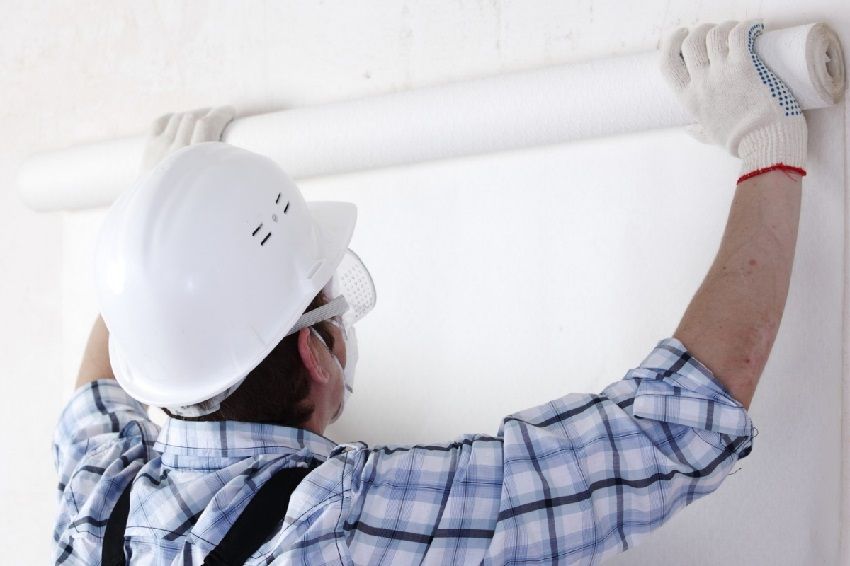
If the question is, what to buy wallpaper for painting: paper, glass cloth, vinyl or non-woven, then in each case you need to study the composition of the material. Most often, non-woven, glass cloth and paper canvases do not contain additives of synthetic origin. If the picture is applied using ink with water-based, such wallpaper can be classified as environmentally friendly.
Important! When buying vinyl wallpaper, it is imperative to check the presence of a certificate confirming that the material does not emit volatile compounds into the air during operation.
Environmental friendliness also depends on what paint paint the wallpaper for painting and how to use the adhesive composition. It is desirable that they lack toxic components. Many wallpapers are treated with water-repellent impregnations, but in order to completely eliminate the possibility of mold formation under the coating, it is better to use a dye instead of them as a finish.
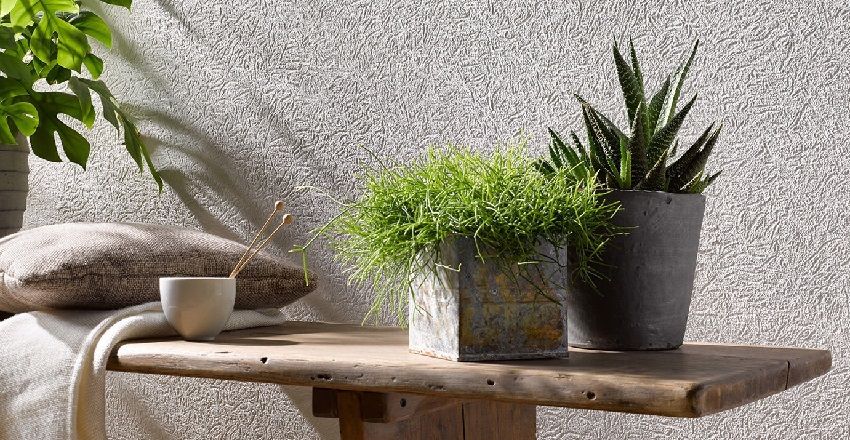
The existing range of wallpaper used for painting includes the following varieties:
- paper;
- non-woven;
- fiberglass.
Each material has its own properties and characteristics, which determine not only the appearance, but also the duration of the coating. Service life, as well as the cost of finishing, depends on the density of the material and the advantages it has. Through the use of high-density wallpaper, you can improve the performance of heat and sound insulation in the room.
Modern wallpaper for painting have a different decorative effect. Looking for where to buy wallpaper for painting, it should be remembered that initially all materials have a white color. The desired shade is obtained in the process of decorating, when the sheets pasted on the walls are covered with a tinting compound (dye).
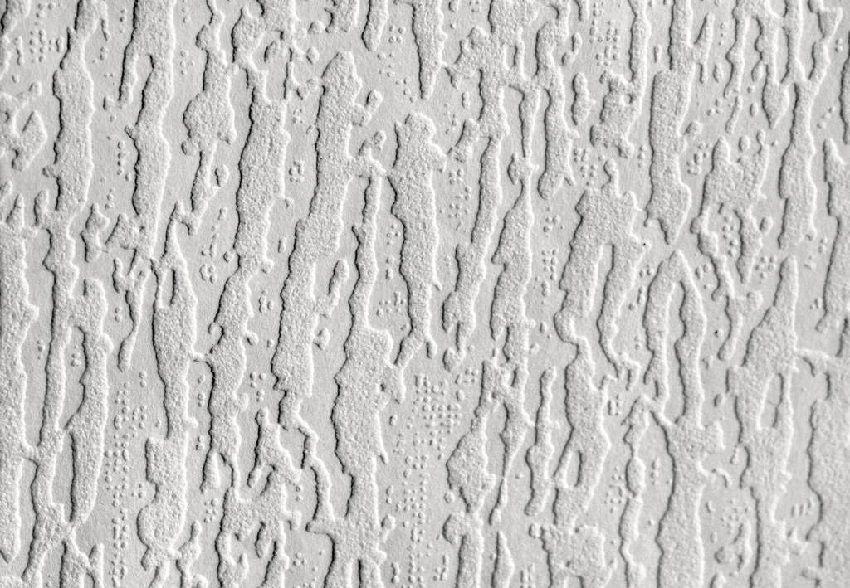
The white base is best suited for this purpose, since any colors easily fall on it. As a result of coloring increases the degree of durability of the finish, as well as improves the appearance of the room. First of all, when choosing a material, you should pay attention to the texture, which can be smooth or embossed.
These products have a completely flat and smooth surface without patterns and decorative patterns. In addition to the decorative function, these wallpapers perform another task – camouflage cracks, scratches, chips and other mechanical damage on the walls.
Buy a smooth wallpaper for painting is preferable if you intend to create the author’s design.
For these purposes, the following tools are used:
- sponges;
- tassels;
- stencils;
- special rollers and other devices for the application of patterns.
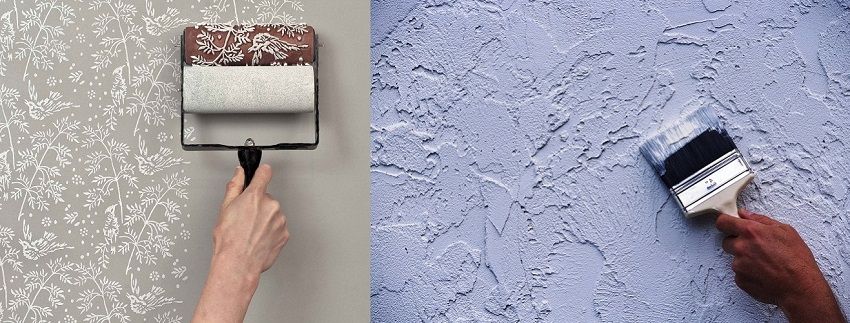
Most often, smooth wallpaper is used as an alternative replacement for putty for leveling walls and ceilings before painting.
The average prices of cheap wallpaper for painting Marburg Patent Decor collection (smooth, size 10.05 x 0.53 m) are 626-807 rubles. for a roll.
Helpful advice! Wallpapers without texture can be used to create a visual expansion effect. To do this, cover the finish with a glossy dye.
Textured wallpapers mimic realistically surfaces with a pronounced structure. On sale you can find imitations of various materials:
- fabrics;
- plaster;
- masonry;
- rough canvas;
- wood;
- stone
In addition, there are varieties decorated with non-standard decorative patterns.
Average prices of wallpaper for painting with a size of 10.05х0.53 m (Marburg products):
| Collection | Price per roll, rub. |
| Patent decor | 626-740 |
| Average prices of wallpaper for painting size 5×1.06 m | |
| Patent decor | 959-1094 |
| The average prices of wallpaper for painting the size of 10.05 x1.06 m | |
| Patent decor | 1836-2572 |
Textured wallpapers are painted in different ways. In the standard version, the painting is carried out on the entire height of the wall in order to create a uniform background of saturated color. To get additional accents on the relief surface during the application of paint you need to purchase non-woven wallpaper. Cloths that mimic natural stone, fabric and plaster can be combined with smooth wallpaper options to create accent zones in the interior by highlighting one or more walls.
Paper-based wallpapers are suitable for decorating walls with small surface defects, and without significant material costs. Manufacturers offer two types of such materials, each of which has its own advantages and disadvantages.
Wallpaper simplex is a single-layer material supplied in the form of rolls. The paper in this case is covered with natural embossing or texture.

The advantages of the material simplex:
- Simple installation system.
- Low cost.
- Safety and environmental cleanliness.
The disadvantages of this material can be attributed to only a short period of operational service.
Duplex wallpaper is a two-layer roll material. The upper layer performs a decorative function, it is decorated with embossed elements. The lower part of the material has a dense structure, thereby increasing the strength of the canvas.
Advantages of duplex material:
- The ability to effectively mask even large defects on the walls.
- As a result of finishing on the wall, a dense and fairly durable coating is obtained.
- Long service life.
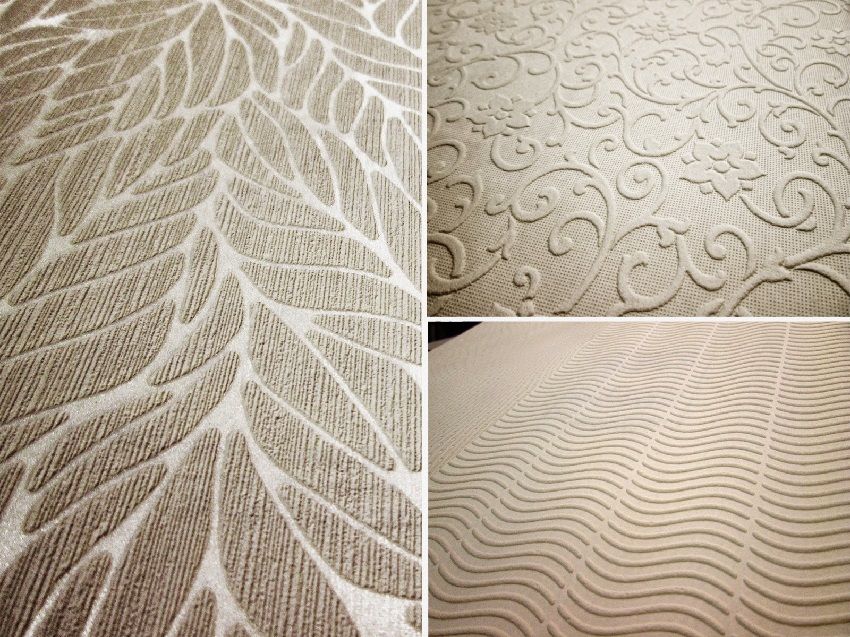
Note! Two-layer paper wallpaper have one significant advantage in comparison with the material simplex. The adhesive composition is not able to penetrate the base and damage the outer decorative layer.
The disadvantages of duplex is the high cost and sophisticated technology of gluing on the surface.
There is another type of paper wallpaper – coarse-fiber. In addition to cellulose, they include wood chips. Externally, the canvas resembles sackcloth or coarse canvas. They have a low price and a fairly simple gluing technology.
German factories occupy a leading position in the production of wallpaper for painting. Therefore, the Novaboss and Rauhfaser collections from the Erfurt brand will be considered as an example for estimating the cost of products.
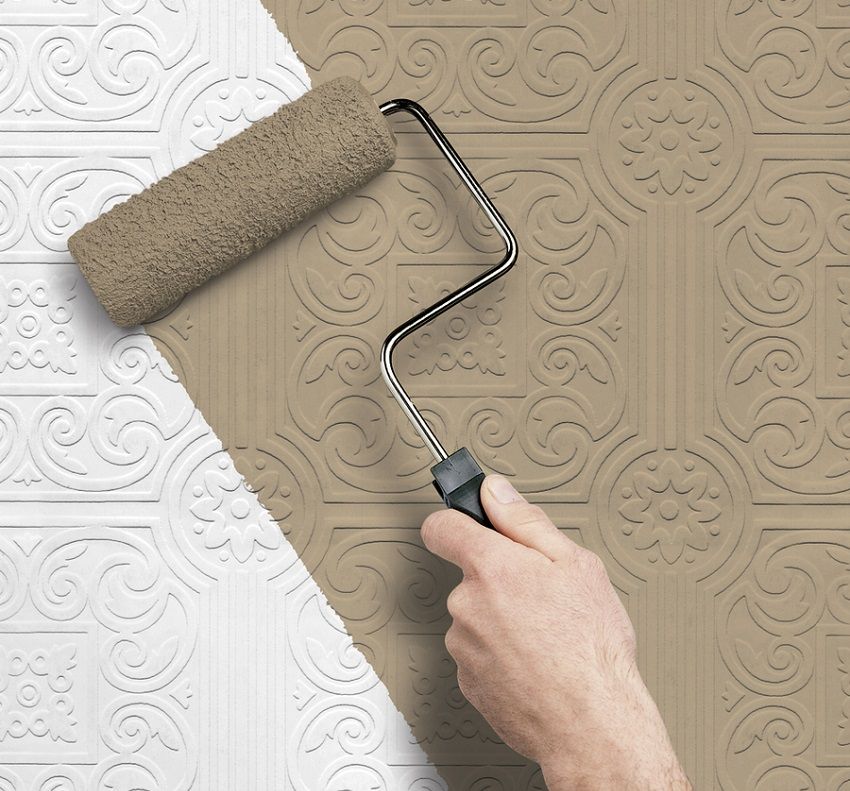
The Novaboss collection belongs to the category of environmentally friendly materials. In the composition there are no chemical components, vinyl and fiberglass. The two-layer coating is suitable for living rooms. In addition, they can be used in hotels and hospitals, as well as office wallpaper for painting, the price of which is more affordable than for special-purpose materials designed for rooms with a high degree of load.
The average prices of white wallpaper for painting duplex Novaboss are 1050-2050 rubles. for a roll.
The Rauhfaser collection is the most eco-friendly paper wallpaper for coloring. The material consists of two layers of paper, between which are sealed (mixed) wood fibers. This finish is acceptable for rooms where allergic people live.
